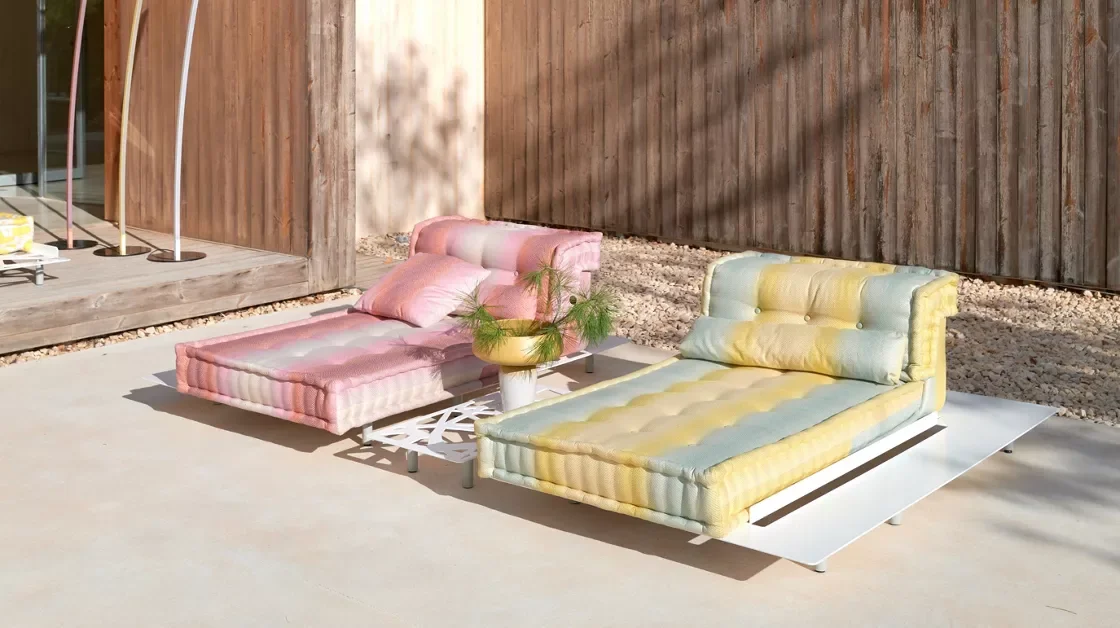The Mah Jong Sofa: A Modern Nod to Traditional Arab Seating
Some furniture pieces are simply functional. Others become a part of a personal story — a bridge between past and present, heritage and modernity. For me, the Mah Jong sofa, designed by Hans Hopfer in 1971 and produced exclusively by Roche Bobois in Italy, is one of those rare pieces.
It is more than a seating arrangement. It is a living reminder of the spaces and traditions I experienced growing up, reimagined for the modern home.
Mah Jong in Moorea fabric by Roche Bobois.
A Sofa with a Story
The Mah Jong was revolutionary in its time. Hans Hopfer designed it not as a rigid piece of furniture, but as a modular, floor-level system that could be reconfigured endlessly. Inspired by informal, layered living, it invites the user to sit, lounge, or recline in whichever way is most comfortable.
In many ways, it is the antithesis of conventional Western seating. That is precisely why it resonates with me.
Growing up in a Syrian household, traditional seating often meant floor cushions, layered textiles, and generous space for guests to gather, share food, and talk for hours. Comfort and connection were the priorities. The Mah Jong, with its stackable cushions and relaxed versatility, echoes that same spirit while speaking in a distinctly modern design language.
My Mah Jong: A Personal Choice
When it came time to choose a Mah Jong for my own home, I knew that I wanted a fabric that felt fresh yet enduring. I selected the “Moorea” performance fabric — a 100% synthetic textile known for its durability and ease of maintenance. The bold contrast of deep green and white brings striking visual energy to the piece, while the fabric’s practical qualities ensure it can withstand daily lounging, guests, and the occasional drink set on the cushion.
The color choice was intentional. The deep green reminds me of lush gardens and courtyards from my travels and family stories — spaces where white stone and greenery meet in quiet, timeless balance. The crisp white offers a visual breath between the richness of the green, much like open courtyards offer pause between architectural details in Middle Eastern design.
Heritage, Modernized
What I appreciate about the Mah Jong is its ability to connect heritage to contemporary living without feeling literal. It is not a themed piece. It is not an exact replica of traditional Arab majlis seating. Instead, it captures the essence of the cultural tradition — the communal, floor-level arrangement — and expresses it in a design-forward, globally recognized icon.
Owning the Mah Jong is not simply about having a beautiful sofa. It is about owning a piece that reflects who I am: a person rooted in heritage while fully engaged with modern design.
Mah Jong Outdoor by Roche Bobois.
A Lesson in Personal Design
This sofa is a daily reminder that meaningful design choices are rarely about matching trends. They are about meaning. Every home benefits from elements that nod to personal history, whether subtly, as in my Mah Jong, or more overtly, such as dedicating a room to a specific cultural influence.
In my work at Mazen Designs, I often encourage clients to consider the pieces that make them feel most at home on an emotional level, not only on a visual level. The most successful interiors are not simply beautiful. They are personal.
If you would like to see how personal storytelling can shape a home, explore our portfolio or reach out through our contact page. Whether it is a sofa, a color palette, or an architectural detail, we can weave your heritage into a space that feels truly yours.
— Mazen Eshak
Founder, Mazen Designs

